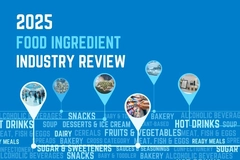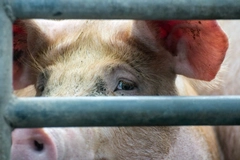
- Industry news
Industry news
- Category news
Category news
- Reports
- Key trends
- Multimedia
- Journal
- Events
- Suppliers
- Home
- Industry news
Industry news
- Category news
Category news
- Reports
- Key trends
- Multimedia
- Events
- Suppliers
US dairy sector celebrates ruling on “gruyere” as generic cheese term

06 Mar 2023 --- A US appeals court upheld the ruling that cheese may be labeled “gruyere” in the US – regardless of its geographic origin. The decision ends a battle between US dairy stakeholders and French and Swiss Gruyere cheese consortiums.
The US court reasoned that cheese has been labeled and sold as gruyere in America for decades without affiliation to a specific region of the world. “The consortiums cannot overcome what the record makes clear: cheese consumers in the US understand ‘gruyere’ to refer to a type of cheese, which renders the term generic,” the Fourth Circuit US Court of Appeals concluded.

The decision marks “a significant win for America’s dairy farmers,” although more work remains, according to the National Milk Producers Federation (NMPF). Jim Mulhern, president and CEO of the Federation, says its organization will “continue to fight alongside its allies to oppose efforts to monopolize common name foods.”
“[The ruling] sets a terrific precedent for the right to use common food names in the US,” says Krysta Harden, president and CEO of the US Dairy Export Council (USDEC).
“We’re grateful the Appeals Court agreed that nobody owns the exclusive right to use generic terms. Now we need other countries to likewise stand up for what’s right and defend that use just as strongly.”
 The FDA’s standard of identity specifies that gruyere cheese must have holes or eyes and be aged at least 90 days. No patents for generic terms
The FDA’s standard of identity specifies that gruyere cheese must have holes or eyes and be aged at least 90 days. No patents for generic terms
In an effort to combat the widespread misuse of the name “gruyere” in the US, the Swiss cheese consortium, Interprofession du Gruyère (IDG) applied to the US Patent and Trademark Office (USPTO) to register “Le Gruyere” as a certification mark. This would indicate that the cheese originated from the Gruyère region of Switzerland.
However, the USPTO rejected the application, reasoning that the term “gruyere” was commonly understood as a type of cheese with a firm, nutty flavor that could be produced in any location and therefore was a generic term.
Since the patent rejection, industry groups filed suit and lost in early 2022. Judges with the appeals court have upheld the lower court ruling.
Unfair competition for America’s melting pot?
USDEC highlights that for over a decade, “well-resourced European interests have attempted to confiscate common names to prevent non-European producers from using long-established generic terms.”
While European food and beverage consortiums would argue these practices are meant to guarantee authentic ingredients and processing methods of prized specialties, US dairy groups argue they produce unfair monopolies.
Mulhern of NMPF says the organization “rejects blatant European attempts to unjustly limit competition from American companies.”
The Consortium for Common Food Names (CCFN) argues that the US was founded on immigrants who brought authentic and artisan traditions from around the world, including many of the processes now protected by consortiums in Europe.
“The US remains a bastion for the defense of consumers’ and producers’ property rights that have been trampled in Europe and many countries around the world,” says Jaime Castaneda, executive director for CCFN.
“The court has sent a clear message that European attempts to stop American producers from using generic food names in the US will be firmly rejected. It is a momentous victory for American consumers, farmers and food manufacturers.”
 Only cheese that originates in the Gruyère region of Switzerland can bear this certification mark in the US.The ruling also makes way for other regions of the world to export gruyere cheese to the US, a practice that was already in motion. Data from the US Department of Agriculture reveals that between 2010 to 2020, Gruyere-style cheese was imported into the US from Switzerland, France, the Netherlands, Germany, Egypt, Denmark, Austria, Belgium, Ireland, the Czech Republic, Italy and Tunisia.
Only cheese that originates in the Gruyère region of Switzerland can bear this certification mark in the US.The ruling also makes way for other regions of the world to export gruyere cheese to the US, a practice that was already in motion. Data from the US Department of Agriculture reveals that between 2010 to 2020, Gruyere-style cheese was imported into the US from Switzerland, France, the Netherlands, Germany, Egypt, Denmark, Austria, Belgium, Ireland, the Czech Republic, Italy and Tunisia.
A question of identity
Although gruyere can now be used generically, it still retains some form of protection. The US Food and Drug Administration (FDA) has issued a standard of identity for “Gruyere cheese,” 21 CFR § 133.149(a), which sets requirements for a cheese to be labeled gruyere. It must contain small holes or eyes and be aged at least 90 days.
However, those requirements are far less stringent than those governing gruyere production in Switzerland and France.
For example, and as specifically relevant to this appeal, the FDA standard of identity does not impose any geographic restrictions as to where gruyere-labeled cheese can be produced.
However, the USPTO did grand a certification mark to the IDG in 2013. Only cheese originating from the Gruyère region of Switzerland can bear a specific certification mark that reads “LE GRUYÈRE SWITZERLAND” in a stylized font, accompanied by the letters “AOC” and a Swiss cross in a stylized square to the right.
Traceability triumphs
European consortiums make it a priority to guarantee products from their original origin are “inimitable.”
In recent traceability moves, the Italian cheese consortium for Parmigiano Reggiano teamed up with a Dutch cheesemark designer and an American developer of digital tracking tech p-Chip Corporation to add blockchain-enabled digital labels to improve the traceability of its cheese wheels.
By Missy Green










